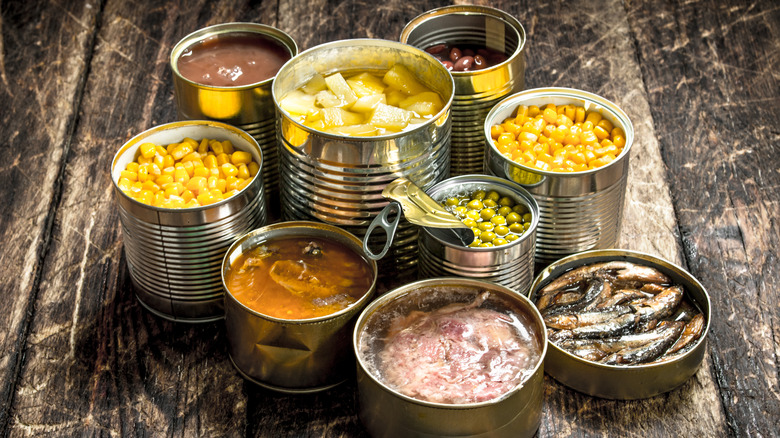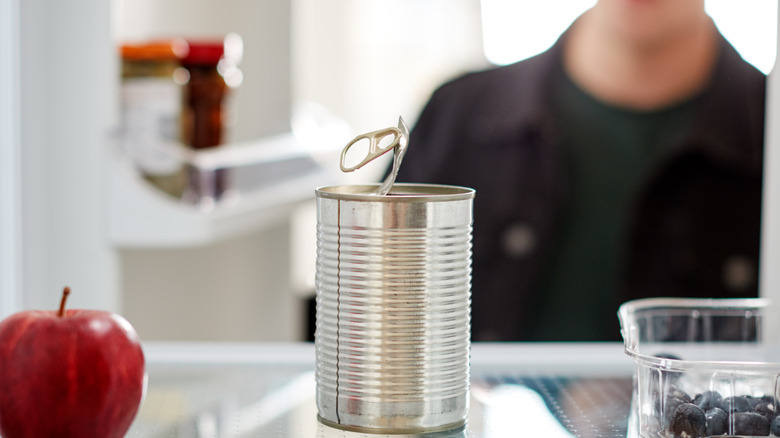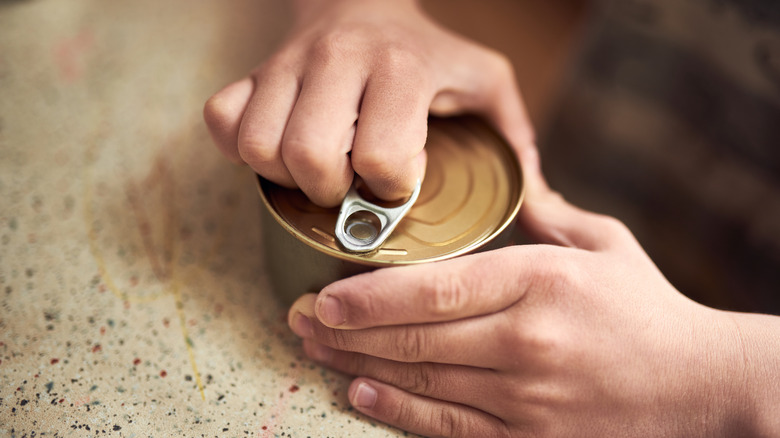Why You Should Seriously Avoid Eating Canned Food That Has Been Frozen
One of the best things about canned food is its longevity. While timelines vary according to the type of food, most canned goods can last many years and still be safe to eat. However, using the best storage practices is key to keeping items in good condition, which doesn't involve freezing canned foods.
While Nicolas Appert, the French inventor of the canning method, didn't exactly know why foods stayed safely preserved in the can, it was soon discovered years later by Louis Pasteur. He determined that it was actually microorganisms that were responsible for food spoilage. Because Appert's process involved heating cans prior to sealing them, he was effectively killing off bacteria while also preventing new microorganisms from accessing the food.
With that being said, one practice to avoid is freezing cans, as this can compromise the integrity of the can and lead to some serious food safety issues in your kitchen.
Freezing can diminish the safety and quality of canned items
When looking for a perfect home for canned fruits, veggies, and meats, a cool, dry place in your pantry is the best place to start. Additionally, you'll want to make sure the area is subject to an ideal temperature range, which happens to be between 50 and 70 degrees Fahrenheit, as per the University of Minnesota Extension. High temperatures affect quality, decrease nutrients, and increase the risk of spoilage.
Ultra-low temperatures can be just as problematic, however. Cold temperatures don't hamper food integrity, but they can cause the can to swell and the airtight seal of the can to break. In this case, the food is exposed to the air and at risk of bacterial growth (via Best Life). It may be safe to thaw a can that is still intact after freezing (i.e., not swollen and without a broken seal), but keep in mind that thawing at temperatures of 40 degrees or higher can also contribute to bacterial growth, according to the USDA. If a can is frozen and intact, it's possible to thaw it in a refrigerator safely, but always use your best judgment. You should also be on the lookout for other signs that a canned item may no longer be safe to consume.
Signs that indicate a canned food should be discarded
In some instances, you can tell that a canned good has spoiled simply by looking at it. Rust on the outside of the can often eats through to the interior, thereby exposing the food to air. Accordingly, rusted cans should be thrown out, as should cans that are bulging. Bulging indicates that a canned item already harbors microorganisms, which makes it a ticking time bomb for foodborne illness, according to Dummies.
There are also signs to look for after opening the can. Potent foul odors signal that the food is bad and shouldn't be eaten. The same can be said for issues with texture and color, or obvious mold growth. Be wary if liquid squirts out of the can upon opening, as this indicates that the pressure has increased inside while the food was being stored. Bubbles inside the can also signal an issue, as they may be caused by the gases generated by bacteria. A little common sense goes a long way with canned items, so always trust your gut!


